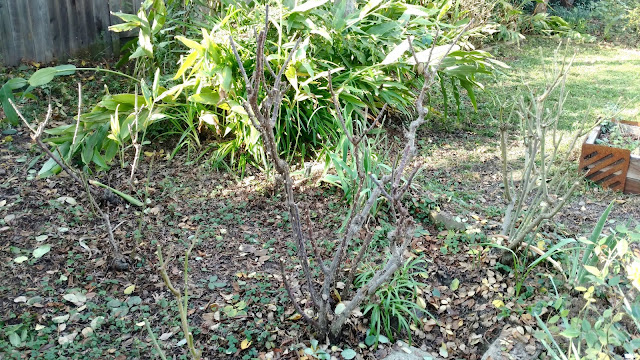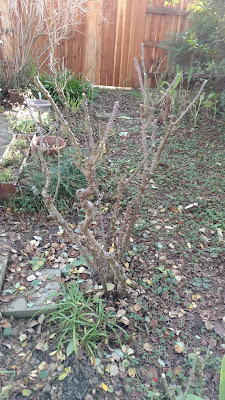
Sierra Foothills Rose Society offers free pruning and rose-care videos online

|
| These hybrid teas, floribundas and grandifloras benefit from pruning taller, not to the ground. (Photos: Debbie Arrington) |

|
|
This is About Face, a very tall
grandiflora rose that appreciates less pruning. |

|
|
Charlotte Owendyk and Baldo Villegas demonstrate how to
prune a tree rose in a segment of the Sierra Foothills Rose
Society's pruning video. (Screenshot)
|
https://www.youtube.com/channel/UCu5-b63jAKxKsi1OkqoLu8A
Comments
0 comments have been posted.Sacramento Digs Gardening to your inbox.
Sites We Like
Garden Checklist for week of July 21
Your garden needs you!
* Keep your vegetable garden watered, mulched and weeded. Water before 8 a.m. to reduce the chance of fungal infection and to conserve moisture.
* Feed vegetable plants bone meal, rock phosphate or other fertilizers high in phosphate to stimulate more blooms and fruiting. (But wait until daily high temperatures drop out of the 100s.)
* Don’t let tomatoes wilt or dry out completely. Give tomatoes a deep watering two to three times a week.
* Harvest vegetables promptly to encourage plants to produce more. Squash especially tends to grow rapidly in hot weather. Keep an eye on zucchini.
* Pinch back chrysanthemums for bushy plants and more flowers in September.
* Remove spent flowers from roses, daylilies and other bloomers as they finish flowering.
* Pinch off blooms from basil so the plant will grow more leaves.
* Cut back lavender after flowering to promote a second bloom.
* It's not too late to add a splash of color. Plant petunias, snapdragons, zinnias and marigolds.
* From seed, plant corn, pumpkins, radishes, winter squash and sunflowers.